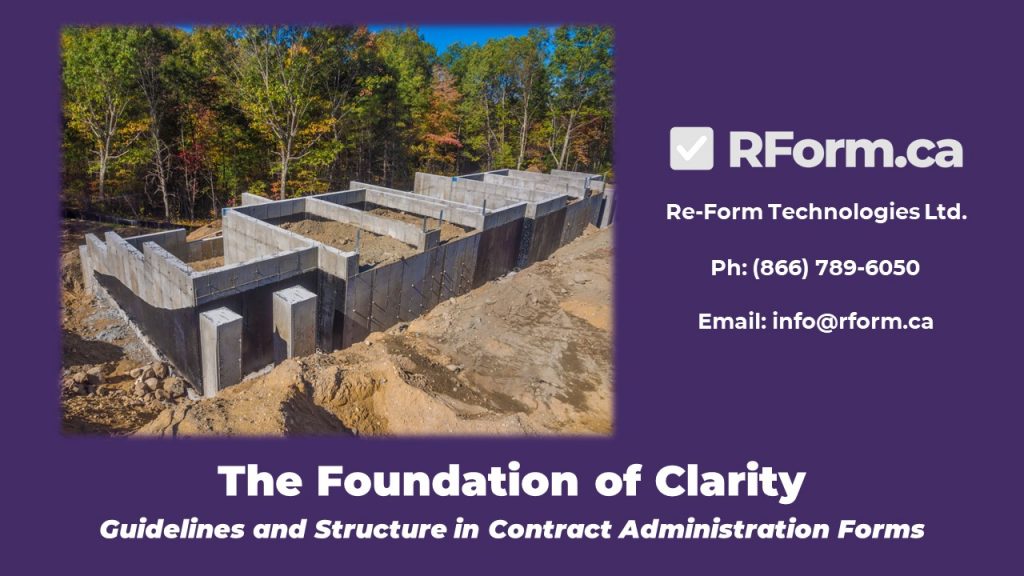
Contracts are the bedrock of business relationships, outlining all parties’ rights, responsibilities, and expectations. Contract administration (CA) forms are vital for managing these agreements within construction and project management. However, the effectiveness of these forms hinges on their clarity and structure. CA forms can lead to misinterpretations, disputes, and costly delays without clear guidelines and a well-defined structure. This blog post will explore why guidelines and structure are paramount in CA forms and how to ensure consistent interpretation.
The Importance of Guidelines
Clear guidelines within CA forms serve as a roadmap for all parties involved, ensuring everyone understands the terms and conditions of the contract. Here’s why guidelines are indispensable:
- Minimizing Ambiguity: Different people can interpret vague language or open-ended clauses differently. Clear guidelines provide precise definitions, remove ambiguity, and leave little room for misunderstanding.
- Setting Expectations: Guidelines outline what is expected of each party, including timelines, deliverables, and payment terms. This clarity helps prevent disputes and ensures everyone is on the same page.
- Streamlining Processes: Well-defined guidelines provide step-by-step instructions for various processes, such as change order requests, dispute resolution, and project closeout. This streamlines workflows and minimizes delays.
- Protecting Interests: Guidelines that address potential risks and liabilities help protect the interests of all parties involved. For example, guidelines on insurance requirements and indemnification clauses can mitigate financial risks.
The Role of Structure
The structure of CA forms is equally important. A well-organized form makes it easy to find information, follow processes, and track progress. Here’s why structure matters:
- Logical Flow: A logical flow of information ensures the form is easy to navigate and understand. Group related information, use headings and subheadings, and consider numbering sections for clarity.
- Consistent Formatting: Consistent formatting, such as using the same font, font size, and spacing throughout the form, enhances readability and professionalism.
- Clear Labeling: Clearly label each section of the form, such as “Scope of Work,” “Payment Terms,” and “Dispute Resolution.” This makes it easy for users to find the information they need.
- Visual Aids: Incorporate visual aids, such as tables, charts, or diagrams, to present complex information in a more digestible format.
Achieving Consistent Interpretation
To ensure consistent interpretation of CA forms, consider these best practices:
- Plain Language: Use plain language that is easy to understand, avoiding legal jargon and technical terms whenever possible. If specialized terms are necessary, provide definitions within the form.
- Examples and Illustrations: Provide examples or illustrations to clarify complex concepts or procedures. This can help users visualize what is expected of them.
- Standard Forms: Use standard forms that industry organizations or legal professionals have developed whenever possible. These forms are often well-tested and provide a solid foundation for clarity and consistency.
- Review and Revision: Before finalizing a CA form, have it reviewed by multiple stakeholders, including legal counsel, project managers, and other relevant parties. This can help identify potential ambiguities or areas for improvement.
- Version Control: Maintain version control of your CA forms, keeping track of changes and updates. This ensures that everyone works with the most current version and avoids confusion.
Additional Tips
- Training and Education: Train all parties involved in contract administration on using and interpreting the CA forms. This can help ensure that everyone understands the guidelines and structure.
- Open Communication: Encourage open communication between all parties involved in the contract. If there are any questions or concerns about the interpretation of a form, address them promptly and transparently.
- Regular Review: Regularly review and update your CA forms to ensure they remain relevant and reflect current industry practices.
Conclusion
Contract administration software, like RForm, can significantly enhance the clarity and structure of CA forms. These tools often include templates, standardized formats, and built-in workflows that guide users through the process. Clear guidelines and a well-defined structure are the cornerstones of effective contract administration forms. By prioritizing clarity, consistency, and communication, you can minimize misinterpretations, avoid disputes, and ensure your projects run smoothly. Investing time and effort in developing and maintaining well-structured CA forms is an investment in the success of your business relationships.

